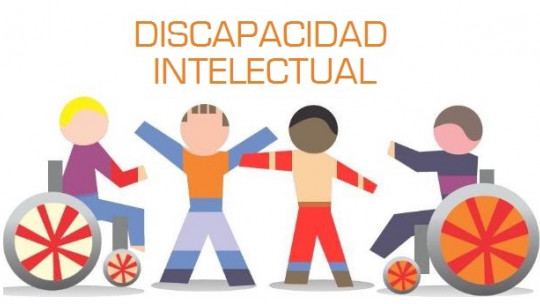
The intellectual and developmental disabilities (DI&D) is the most common personal disability condition in the population and among students.
Intellectual disability concept
The expression “intellectual and developmental disabilities” was adopted in June 2006, after being voted on by the members of the American Association on Intellectual and Development Disabilities (AIDD). Previously it was called American Association on Mental Retardation (AAMR).
At least three names have been known for this group: “mental deficiency”, “mental retardation” and “intellectual and developmental disability”.
The AIDD has modified the name, definition, diagnosis and classification as a consequence of advances in the different disciplines involved in this topic: medicine, psychology and education.
A term that avoids stigmatization
The previous concept was changed for this new one. so that labels or social prejudices were minimized such as: visions focused on the deficit, on the slow and maladjusted mental functioning, etc.
The new name aims to take advantage of a new conception of development that draws on the contributions of sociocultural and ecological theories.
Allows a functional view of development, which indicates that a person can have different contexts and throughout the life cycle. At the same time, it provides the concept of disability that is nourished by the contributions of International Classification of Functioning, Disability and of the WHOand that recognizes the social origin of the difficulties experienced by the person suffering from ID&D.
On the other hand, it also understands intellectual disability as a developmental disorder which has a lot in common with other developmental problems that can affect children.
Objectives of this monograph
In this article We will try to provide a current vision of intellectual and developmental disabilities based on the supports paradigm and in a conception of this disability as a function of the interaction between the independent functioning of the person and the contexts in which they live, learn, work and enjoy; provide a general framework and some instruments for the evaluation of students with ID&D; and offer some answers to promote its development.
What do we understand by intellectual and developmental disability?
First of all, let’s define intellectual disability and the categories that constitute it.
What is intellectual disability?
exist four approaches in this field:
Theoretical and practical models on intellectual disability
Models with which people with intellectual disabilities have been conceptualized and that justified certain professional practices. They are distinguished three great models:
Charity-assistance model
From the end of the 19th century and during almost half of the 20th century, people with disabilities were separated from society and entrusted to large charitable asylum institutions. The care they received was of a welfare nature and obeyed the charitable concept of public performance. They didn’t think it was something social or rehabilitative.
Rehabilitative-therapeutic model
It has spread in Spain since the end of WWII, in the 1970s. It means the adoption of the clinical model in the diagnosis and treatment of people with ID, and the predominance of specialization. The model coincides with the rise of the aforementioned clinical approach. The diagnosis of ID focuses on the individual’s deficit and they are classified into categories based on their IQ. It is considered that the problem is within the subject and specialized institutions are created according to the nature of the problem to serve them.
Educational model
It started in our country in the 1980s. It is characterized by the adoption of the normalization principle at all stages of these people’s lives. They are beginning to be considered with the same rights as their peers to education, healthcare, work and a decent life. Education should be provided if possible in ordinary centers, the diagnosis should prioritize the capabilities of these people and focus on the support they will need to respond to the demands of different living environments.
History about the definition of the concept
The AAIDD has changed the definition of DI up to 10 times. The last one was in 2002. This is a definition that goes beyond the 1992 one but maintains some of its key exceptions: the fact that mental retardation is not taken as an absolute trait of the person, but as the expression of the interaction between the person, with intellectual and adaptive limitations, and the environment; and the emphasis on support.
In the 1992 definition the categories disappear. They are explicitly rejected and it is stated that people with mental retardation should not be classified based on traditional categories, but rather we should think about the support they may need to increase their social participation.
Despite this, the 1992 definition meant an important improvement for people with ID, but was not without criticism:
For this reason, the AAIDD proposes a new definition built on the 1992 one. A system is created to diagnose, classify and plan supports for people with mental retardation.
The current definition
The new definition of mental retardation proposed by AAMR is as follows:
“Mental retardation is a disability that is characterized by significant limitations in both intellectual functioning and adaptive behavior expressed in conceptual, social and practical skills. This disability originates before the age of 18.”
With this definition the cognitive basis of the problem is once again affected, but from a model that emphasizes social and practical competence, which translates the recognition of the existence of various types of intelligence; a model that reflects the fact that the essence of mental retardation is close to the difficulties in coping with daily life, and the fact that limitations in social and practical intelligence explain many of the problems that people with ID have in the community. and at work.
It expands the concept to other population groups, in particular the forgotten generation: an expression that includes people with borderline intelligence.
The aspects that change with this last definition are:
As in 1992, The definition incorporates the following five assumptions:
- Limitations in current functioning must be considered within the context of the community settings typical of peers of the same age and culture.
- An adequate assessment has to consider cultural and linguistic diversity, and also differences in communication, sensory, motor and behavioral factors.
- Within the same individual, limitations often coexist with strengths.
- An important goal when describing limitations is to develop a profile of the supports needed.
- With appropriate personalized supports over a sustained period of time, the way of life of people with mental retardation will generally improve.
He Mental retardation It is understood within the framework of a multidimensional model that provides a way to describe the person through five dimensions that include all aspects of the individual and the world in which they live.
The model includes three key elements: person, the environment in which you liveand the supports.
These elements are represented within the framework of the five dimensions that are projected into the person’s daily functioning through support. Supports have a mediating role in the lives of people with intellectual disabilitiesI.
A broader concept of ID is reached that It involves understanding that the explanation of people’s daily behavior is not exhausted by the effect of the five dimensions but from the support they can receive in their living environments.
Trends that have prevailed in the field of DI
Characteristics and causes of intellectual and developmental disabilities
Three important characteristics are found: limitations in intellectual functioning, limitations in adaptive behavior and need for support.
1. Limitations in intellectual functioning: Intelligence refers to the student’s ability to solve problems, pay attention to relevant information, abstract thinking, remember important information, generalize knowledge from one scenario to another, etc.
It is generally measured through standardized tests. A student has ID when her score is two standard deviations below the mean.
The specific difficulties presented by people with ID
They usually present difficulties in these three areas:
to) Memory: People with ID often show limitations in their memory, especially what is known as MCP, which has to do with their ability to remember information that must be stored for seconds or hours, as usually happens in class. It is more evident in the cognitive aspects than in the emotional ones. Strategies can be employed to improve capacity.
b) Generalization: refers to the ability to transfer knowledge or behaviors learned in one situation to another. (from school to home, for example).
c) Motivation: Research reveals that lack of motivation is associated with previous experiences of failure. The difficulties in successfully overcoming certain challenges of daily life at home and in the center make them more vulnerable. If you can change the sign of your experiences, motivation will also improve.
d) Limitations in adaptive behavior: People with ID often present limitations in adaptive behavior. Adaptive behavior refers to the ability to respond to changing demands of the environment; People learn to adjust/self-regulate behavior to different life situations and contexts depending on age, expectations, etc.
To identify a student’s abilities in this field, conceptual, social and practical capacities are usually explored through scales constructed for this purpose. Based on the results, educational activities can be designed that must be integrated into the curriculum.
Self-determination is the most central expression of the capacities inherent to adaptive behavior and is of special relevance for people with ID. Its development is associated with a perception of greater or lesser quality of life.
Causes of intellectual disability
Regarding the causes, there are four categories:
- Biomedical: factors related to biological processes, such as genetic disorders or malnutrition.
- Social: factors related to the quality of social and family interaction, such as the stimulation or sensitivity of parents to the needs of their son or daughter.
- Behavioral: factors that refer to behavior that can potentially cause a disorder, such as accidents or the consumption of certain substances.
- Educational: factors that have to do with access to educational services that provide supports to promote cognitive development and adaptive skills.
It must be taken into account that these factors can be combined in different ways and proportions.
Intellectual disability and quality of life
One of the four characteristics of the emerging disability paradigm is personal well-being, which closely associates the concept of quality of life.
The recognition of the rights that people with ID have implies the recognition of the right to a quality life.
Over time, the concept of quality of life has been applied to people with ID. This implies access to services, the effectiveness and quality of these services that allow them to enjoy the same opportunities that others have.
Access to a quality life involves recognizing the right to difference and the need for the services offered to be permeable to their particular conditions.
People with ID have certain characteristics that generate specific needs throughout their development; these needs outline the type of support they require to access services that make optimal living conditions possible.
Quality of life is defined as a concept that reflects the living conditions desired by a person in relation to their life at home and in the community; at work, and in relation to health and well-being.
Quality of life is a subjective phenomenon based on a person’s perception of a set of aspects related to their life experience.
The concept of quality of life
According to Schalock and Verdugo, the concept of quality of life (CV) is being used in three different ways:
- As a sensitizing concept that serves as a reference and guide from the individual’s perspective, telling us what is important to them.
- As a unifying concept that provides a framework for conceptualizing, measuring and applying the construct of QOL.
- As a social construct that becomes a predominant principle to promote the well-being of the person.
Promoting well-being in people with intellectual disabilities
In the work to promote the well-being and quality of life of people with ID, the importance of eight central dimensions and certain indicators is recognized:
- Emotional well-being: happiness, self-concept, etc.
- Relationships: intimacy, family, friendships, etc.
- Material well-being: belongings, security, work, etc.
- Personal development: education, skills, competencies, etc.
- physical well-being: health, nutrition, etc.
- Self-determination: elections, personal control, etc.
- Social inclusion: acceptance, participation in the community, etc.
- Rights: privacy, freedoms, etc.
Services and resources for people with intellectual disabilities
The services and resources offered to people with ID throughout the life cycle must be aimed at satisfying their needs in order to be able to respond to the demands of the various contexts in which they develop and enable a life quality.
Characteristics that define a optimal environment:
- Presence in the community: sharing ordinary places that define community life.
- Elections: the experience of autonomy, making decisions, self-regulation.
- Competence: the opportunity to learn and perform functional and meaningful activities.
- I respect: the reality of being valued in the community.
- Community involvement: the experience of being part of a growing network of family and friends.
- About people with ID in the educational context: “Students with intellectual disabilities: evaluation, monitoring and inclusion”








